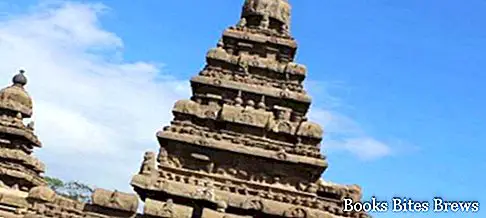What to see in Mahabalipuram, an archaeological site rich in history concerning the myth of the seven pagodas of Mahabalipuram in India, with the charm of the Beach Temple linked to submerged temples.
Tourist information
When we speak of the Seven pagodas of Mahabalipuram we want to refer to a myth present in India and partially in Europe for several centuries.
Seven Pagodas is the name that was given by the first European explorers who came to the Indian city of Mahabalipuram due to the fact that according to a widespread legend, in it there were once seven temples similar to the Temple of the beach, erected in the eighth century on the shores of the gulf of Bengal and whose remains can still be admired today.
The Temple of the beach, in Indian beliefs, expresses the myth of Brahmanism which intends to explain the origin of pagodas in supernatural ways.
At that time Prince Hiranyakasipu reigned who did not want to worship the god Vishnu unlike his son Prahlada who was instead full of faith.
For this reason the prince sent his son away for a certain period of time after which he allowed him to return.
But once again there were disagreements between the two always about Vishnu so heated that the father, losing patience, kicked a pillar from which Vishnu immediately emerged in the form of a man with a lion's head who punished Hiranyakasipu by killing him, thus allowing Prahlada to succeed him by becoming the ruler and also having a son whom he called Bali.
Many European discoverers, including Marco Polo, made some nods to the seven pagodas as an account of their travels to the Indian colonies.
The merit of spreading the knowledge of this myth in Europe is mainly recognized to the poet Robert Southey, who in one of his poems, referring to the city using the name Bali for it, in honor of its founder, says that there are some pagodas.
At the time of the catastrophic tsunami, which hit most of the lands overlooking the Indian ocean, the water near Mahabalipuram shrank about 500 meters, with that sadly famous effect that occurs a few moments before such an event it hits the coast.
Those who were on the beach were eyewitnesses to what happened and for a few moments they noticed a very long row of huge rocks emerge from the troubled waters along with some statues and small buildings that had been covered with sand for so many years.
Recommended readings- India: useful information
- Mumbai (India): what to see in old Bombay
- Bangalore (India): what to see in the capital of Karnataka
- New Delhi (India): what to see in the capital
- Calcutta (India): what to see in the city of Mother Teresa
What see
The most famous archaeological finding due to the tsunami is that of the large statue of a lion in a sitting position which, remained in the light due to the changed course of the coastline on the beach of Mahabalipuram, has become an attraction for all local tourism.
In April 2005, a team of Indian archaeologists was formed who, assisted by the means of the national navy, began a search off the coast of Mahabalipuram using sophisticated methods such as sonar technology.
Thanks to these in-depth research they made very interesting discoveries. The stones that eyewitnesses said they saw just before the tsunami occurred belonged to a wall about 200 centimeters high and just under a hundred meters long.
In addition, two submerged temples and a third temple excavated from the rock were found less than 500 meters from the coast.
Although all of this cannot absolutely confirm the existence of seven pagodas, it does allow us to affirm with certainty that the religious area of Mahabalipuram was much larger than previously believed.
The scholars also said that by relating these submerged temples with the Temple of the beach and other minor structures, it is possible to obtain a whole very similar to what is depicted in the only painting from the Pallava era that has come to us representing the arrangement of the Seven Pagodas.
In addition, after the tsunami, a large stone with numerous inscriptions also remained in the open, testifying to the fact that the sovereign Krishna III had paid a huge sum of money to keep a flame burning forever in front of the temple.
The more and more intrigued archaeologists have excavated still in the vicinity of this stone and came to discover an additional temple from the Pallava era together with numerous coins and other objects from ancient Hindu ceremonies.




